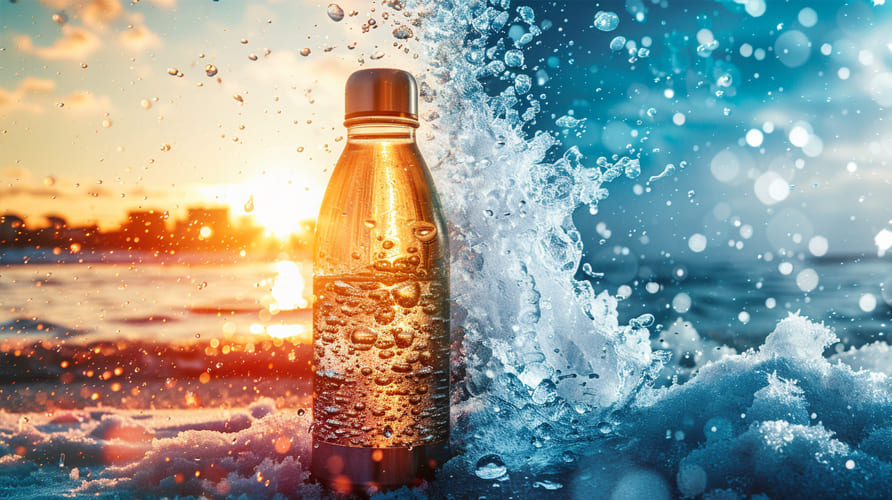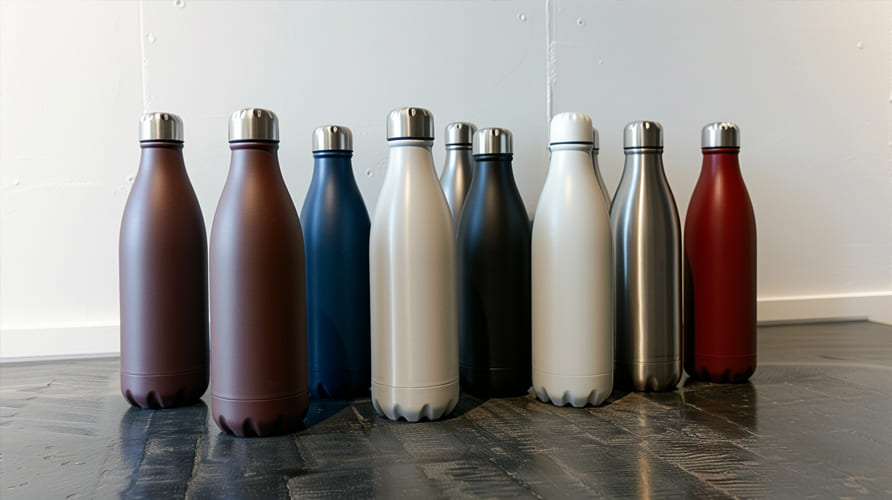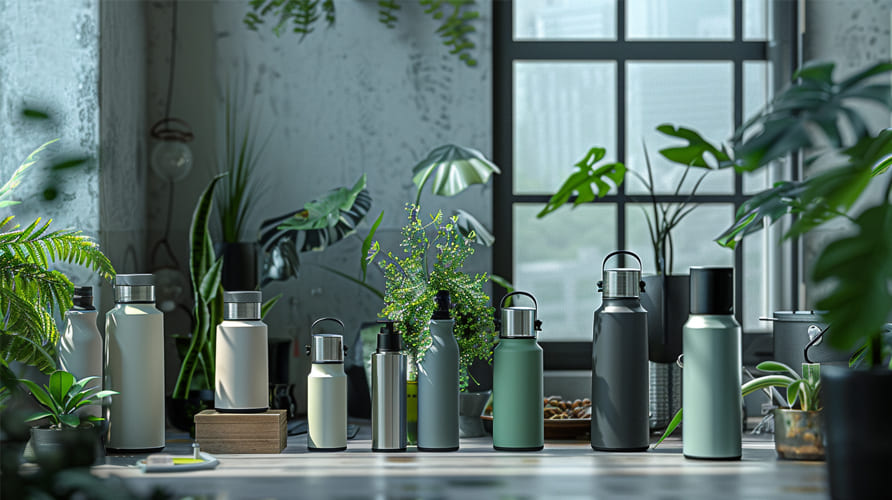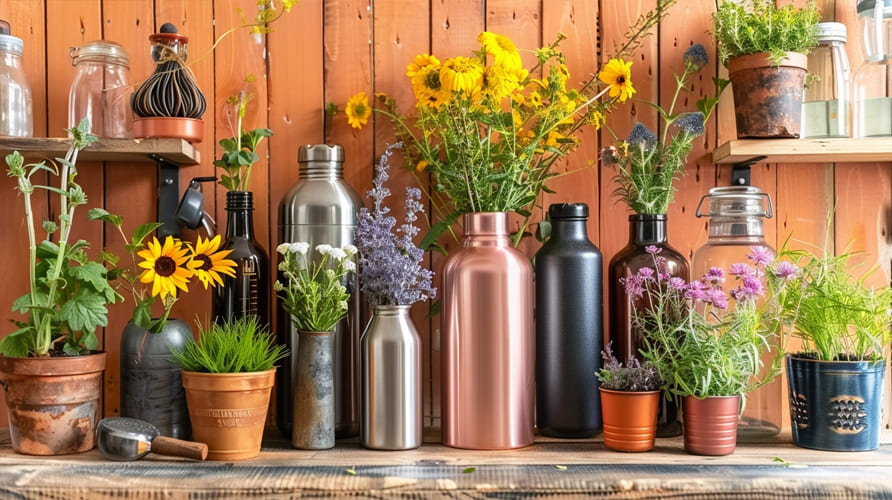Struggling to choose the right tumbler size for your customers or brand? Confused by ounces, ml, and trends? Get the clarity you need now for smart purchasing decisions.
The perfect tumbler size depends heavily on the end-user's needs. Generally, 16-20 oz tumblers are popular for daily coffee or tea, 30-40 oz sizes work well for maximizing hydration, and smaller 10-12 oz options suit kids or smaller drinks. Consider your target audience's lifestyle carefully.

Choosing the right tumbler size might seem simple at first glance. But this decision directly impacts customer happiness and how well your inventory moves. Getting it right means looking beyond just the capacity listed on a spec sheet. Let's break down the details so you can choose the best options for your business and avoid common pitfalls.
What is the perfect tumbler size?
Feeling lost in the huge variety of tumbler options1 out there? Worried about stocking sizes that might just sit on the shelf? Let's figure out what "perfect" really means for your specific business goals and the customers you serve.
There isn't one single "perfect" size that fits everyone. The ideal size depends on how the tumbler will be used. Think about coffee drinkers (12-16oz), people focused on daily hydration2 (20-30oz), or those needing drinks for long trips (30-40oz+). Understand your customer's typical day.

Defining the "perfect" size requires looking closely at who will be using the tumbler and why. As a B2B supplier at Icobottle, focusing on wholesale, we help clients like you pinpoint the best sizes for your specific market.
Defining "Perfect" for Different Markets
Who are you selling to? Commuters need portability. Athletes prioritize capacity. Office workers might want something that fits under a coffee machine. Students could value versatility. Consider where your customers live; for example, larger sizes (30oz+) are often very popular in the American market compared to some European countries. Also, think about the purpose: is this a high-volume retail item or a corporate gift? The "perfect" size changes based on these factors.
Matching Size to Functionality
Different sizes offer different benefits:
- Smaller (10-16oz): These usually fit most car cup holders easily. They are great for hot beverages like coffee or tea, and they're a popular choice for kids' drinks. They are generally lighter and easier to handle.
- Medium (20-24oz): This range is often seen as the most versatile. It’s suitable for water, iced tea, smoothies, and more. It offers a good balance between holding enough liquid and still being reasonably portable.
- Large (30-40oz+): Excellent for people aiming to drink a lot of water throughout the day without constant refills. Also good for long commutes or outdoor activities. The main drawback can be size and weight, and they might not fit all standard cup holders. Adding a handle is often a good idea for these larger sizes.
Size vs. Use Case Examples
| Size Range (oz) | Primary Use | Target User Examples | Key Considerations |
|---|---|---|---|
| 10-16 | Coffee, Tea, Kids' Drinks | Commuters, Office Workers | Portability, Cup Holders |
| 20-24 | Daily Hydration, Smoothies | Students, General Use | Versatility, Balance |
| 30-40+ | Max Hydration, Long Travel | Athletes, Outdoor Enthusiasts | Capacity, Handle Needed? |
I remember talking with Mark Shenng, a client from Canada. He primarily ordered 20oz tumblers but wanted to explore other options. We discussed his customer base – many were office workers transitioning to hybrid work schedules. We suggested adding a 16oz size for easier commuting days and a 30oz size for better hydration while working from home. By analyzing his specific customer needs, we helped define his perfect size mix.
How big should a tumbler be?
Feeling overwhelmed by all the different tumbler capacities available? Concerned about managing inventory space and meeting minimum order quantities for various sizes? Let's focus on the ideal dimensions, not just volume, for your business situation.
A tumbler's size should match user needs and practical considerations. Think about liquid capacity (oz or ml), but also physical dimensions like height and base diameter (for cup holders!), and overall weight. Balance how much it holds with how easy it is to carry and store.

When deciding "how big" a tumbler should be, we need to think beyond just the fluid ounces it holds. The physical shape and size play a huge role in usability and customer satisfaction. These details matter greatly when you're ordering wholesale.
Beyond Fluid Ounces: Physical Dimensions Matter
- Height: How tall is the tumbler? This affects stability (taller ones can tip easier) and where it can be stored, like under single-serve coffee makers or inside certain bags.
- Base Diameter3: This is critical. Does it fit standard cup holders in cars or on gym equipment? In North America, cup holders are typically around 2.75 to 3.25 inches (70-83mm). Always verify this dimension! A tumbler that doesn't fit is frustrating.
- Lid/Mouth Diameter: A wider mouth makes cleaning easier and allows users to add ice cubes easily. It also determines compatibility with accessories like different types of lids or reusable straws.
Weight and Portability
Larger tumblers naturally weigh more, especially when filled with liquid. Consider the end-user. Will they be carrying it all day? Stainless steel quality (like the 18/8 grade we use at Icobottle) ensures durability but adds weight. Finding the right balance is key. Thinner steel might save weight but dent easier.
Customization Considerations
The size and shape affect branding possibilities. A larger tumbler offers more surface area for logos or custom designs. However, a tapered shape might distort a logo compared to a straight-walled tumbler. We provide design templates showing the exact printable area for each model and size. Mark, my Canadian client, really appreciates this. He needs to ensure his rebranded logo looks perfect. We also confirm base diameters fit North American standards, addressing his concern about logistics and quality control – he's had issues before with suppliers providing tumblers that didn't fit common cup holders. Thinking about the physical size prevents problems later.
Key Dimensions & Their Impact
| Dimension | Typical Range (Approx.) | Impact | B2B Consideration |
|---|---|---|---|
| Capacity (oz/ml) | 10-40+ / 300-1200+ | How much liquid it holds | Match target market use |
| Height (in/cm) | 5-10+ / 13-25+ | Storage, Stability, Coffee Machine Fit | Provide exact specs |
| Base Dia (in/cm) | 2.5-3.5 / 6.5-9 | Cup Holder Compatibility | Verify standard sizes (NA/EU) |
| Weight (empty) | 0.5-1.5 lbs / 0.2-0.7kg | Portability, User Comfort | Material quality vs. weight |
How to measure tumbler size?
Are you confused by size labels that seem inconsistent between different suppliers? Worried about ordering thousands of units only to find they aren't the capacity you expected? Learn the standard ways to measure to ensure accuracy.
Measure tumbler size mainly by its liquid capacity, stated in fluid ounces (fl oz) or milliliters (ml). Fill the tumbler nearly to the brim with water to check usable volume. Also, measure physical dimensions: height, base diameter, and mouth diameter using a ruler or calipers.

Getting measurements right is crucial in the B2B world. Misunderstandings here can lead to disputes, wasted inventory, and unhappy end-customers. As someone who handles wholesale orders daily at Icobottle, I know clear, accurate measurements prevent major headaches.
Measuring Liquid Capacity Accurately
The most common way to define tumbler size is by its liquid capacity4. In the US and UK, this is usually fluid ounces (fl oz). In Europe and many other regions, milliliters (ml) are standard.
- Tool: Use a calibrated measuring cup or laboratory beaker for accuracy.
- Method: Fill the tumbler with water up to where the lid typically seals or just below the rim. Don't fill it absolutely to the top where it would spill when moved. This gives you the practical, usable volume.
- Important Note: Often, the advertised size (like "20 oz") is nominal. The actual usable volume might be slightly less (e.g., 19.5 oz). Transparency is key here. We always provide the precise usable volume on our spec sheets to clients like Mark, who values clear communication after experiencing issues with suppliers misrepresenting capacity.
Measuring Physical Dimensions
Accurate physical measurements are just as important as volume:
- Height: Use a ruler or tape measure. Measure vertically from the flat bottom surface to the highest point of the tumbler's rim (usually exclude the lid unless the measurement specification explicitly includes it).
- Base Diameter: Measure across the very bottom of the tumbler. For the best accuracy, especially if the base is slightly tapered, use digital calipers. This is vital for confirming cup holder fit.
- Mouth/Top Diameter: Measure across the opening at the top, from rim edge to rim edge, at the widest point. Calipers are also good here for precision.
Why Consistent Measurement Matters in B2B
- Order Accuracy: Ensures the products received match the purchase order specifications exactly. This prevents disputes about what was agreed upon.
- Packaging Design: If you or your client are designing custom boxes or inserts, you need precise dimensions. Guessing leads to packaging that doesn't fit.
- Supplier Comparison: Accurate specs allow you to fairly compare products from different manufacturers.
We make it a standard practice to provide detailed specification sheets that include all these measurements, along with tolerances (e.g., +/- 0.5mm). This level of detail helps build trust and avoids the communication breakdowns and certificate issues Mark mentioned as major pain points when dealing with less careful suppliers.
Measurement Tools & Purpose
| Tool | Measurement | Use Case | Tip |
|---|---|---|---|
| Measuring Cup/Beaker | Liquid Capacity | Verifying volume (fl oz / ml) | Use water, fill carefully to usable level |
| Ruler/Tape Measure | Height, Diameters | General physical dimensions | Can be less precise for diameters |
| Calipers | Diameters | Accurate base/mouth diameter measurement | Essential for cup holder fit verification |
Conclusion
Choosing tumbler sizes means looking at capacity, physical dimensions, and how your customers will use them. Focus on your target market to pick sizes that are practical and popular.
-
Discovering the best tumbler options can help you make informed decisions for your business and customers. ↩
-
Exploring daily hydration can provide insights into customer preferences for tumbler sizes and usage. ↩
-
Understanding base diameter is crucial for ensuring compatibility with cup holders, enhancing user experience and satisfaction. ↩
-
Understanding liquid capacity measurement is essential for accurate tumbler sizing, ensuring you get the right product for your needs. ↩

